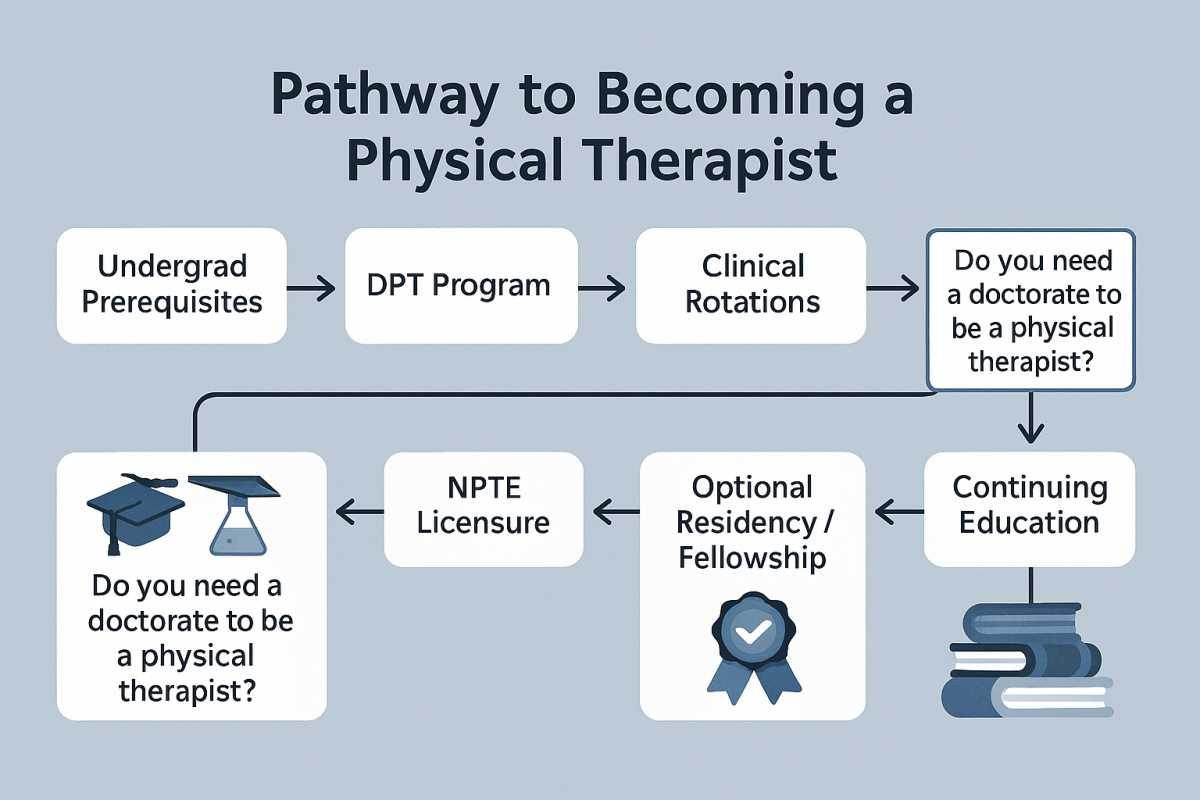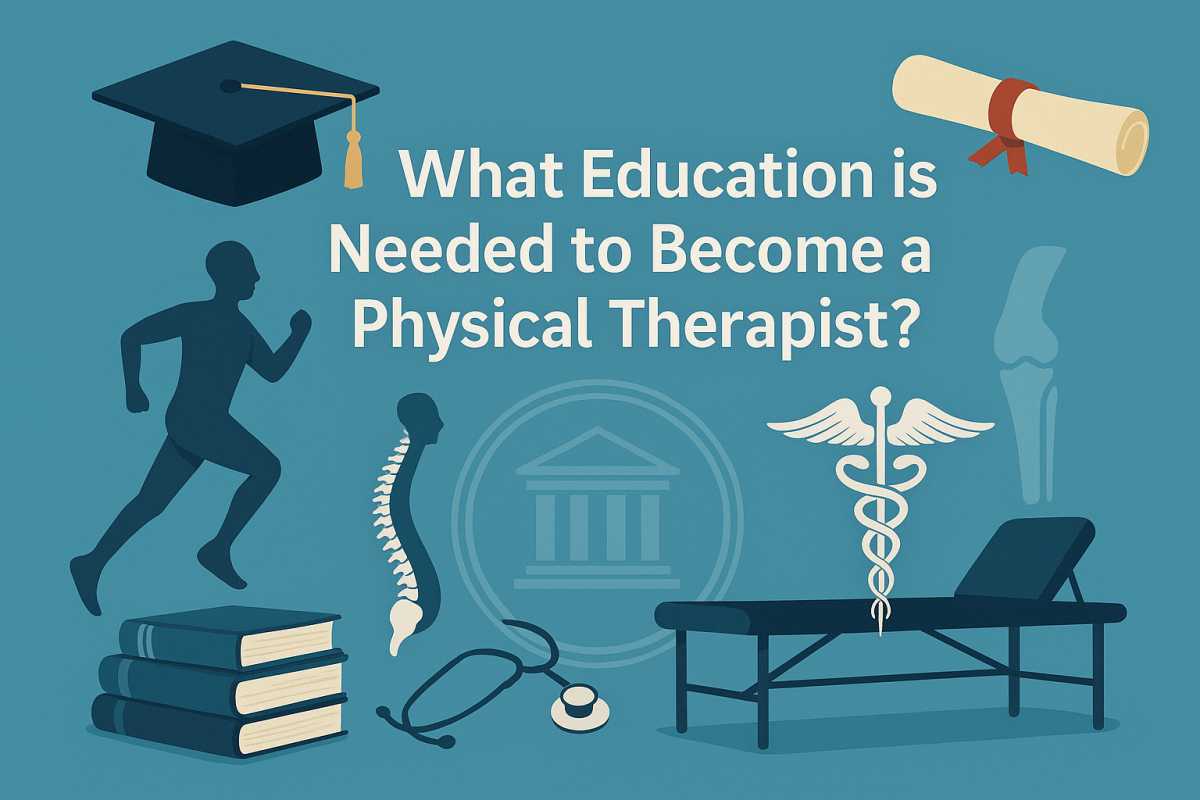If you’ve been wondering what education is needed to become a physical therapist, here’s the short version first: in the U.S., you’ll complete specific college prerequisites, earn a Doctor of Physical Therapy (DPT) from an accredited program, finish clinical rotations, and pass the NPTE licensure exam. The longer, practical version—with timeline, tips, and common questions—is below.
Step 1: Undergraduate preparation (The “pre-PT” phase)
You don’t need a specific major, but you do need the right prerequisites. Most DPT programs expect:
Anatomy & Physiology (I and II with labs)
General Biology (with lab)
General Chemistry (I and II with labs)
General Physics (I and II with labs)
Statistics and/or College Algebra
Psychology (often two courses, e.g., general + developmental/abnormal)
English/writing and communication
Helpful extras: medical terminology, exercise physiology, kinesiology, and a sprinkling of sociology or public health. Many programs still value shadowing/observation hours (outpatient ortho + inpatient/acute if you can) and strong letters of recommendation (one from a licensed PT is gold). Some schools have dropped the GRE; others still require it—check early.
Timeline: Typically 3–4 years undergrad, depending on your pace and whether you arrive with AP/dual-credit.
Step 2: DPT program (The professional doctorate)
The DPT is usually 3 years full-time. You’ll dive into:
Foundational sciences: biomechanics, neuroscience, pharmacology, pathology
Systems courses: musculoskeletal, neuro, cardiopulmonary, integumentary
Clinical reasoning & differential diagnosis
Professional practice: ethics, documentation, health policy, leadership
Clinical education: integrated and terminal full-time clinical rotations (often totaling 30+ weeks)
Choose a CAPTE-accredited program—accreditation is essential for licensure eligibility.
Step 3: Licensure (NPTE + State requirements)
After graduation, you’ll sit for the National Physical Therapy Examination (NPTE). Most states also require:
A jurisprudence exam (state practice act/ethics)
Background check and application fees
Proof of education and sometimes official transcripts sent directly from the program
Once licensed, you’re a PT—but learning doesn’t stop. Many states require continuing education to renew your license.

Do you need a doctorate to be a physical therapist?
Short answer: yes, in the U.S. today. The entry-level degree for new PTs is the DPT. Historically there were bachelor’s and master’s routes, but the profession standardized on the doctoral level to match the scope of practice (direct access, screening for medical red flags, differential diagnosis, etc.). If you already practice as a PT from an older credential, you can remain licensed; new entrants, however, complete a DPT.
A quick clarification: PT (Physical Therapist) vs PTA (Physical Therapist Assistant). PTAs complete associate-level programs and work under PT supervision—they don’t diagnose or design plans of care independently. If your goal is to be the evaluating therapist, you’ll pursue the DPT.
Related Article: Pre Physical Therapy Programs
Optional but valuable: Residency, fellowship & board certification
After licensure, some PTs do a 1-year residency (orthopedics, neuro, sports, pediatrics, etc.), then sit for board certification (e.g., OCS, NCS, SCS). Others continue directly into practice and build specialty skills through continuing ed. Both pathways are common; residencies compress mentorship and complex caseloads into a structured year.
How long does it take (realistically)?
Undergrad prerequisites: 3–4 years
DPT program: ~3 years
Total: about 6–7 years post-high school. Add time if you spread prerequisites out, or subtract a bit if you accelerate with summer terms.
Cost talk (and planning tips)
DPT programs can be pricey. A few practical moves:
Compare in-state vs out-of-state tuition and clinical placement networks.
Ask programs about scholarships/graduate assistantships.
Track the first-time NPTE pass rate and employment rate—good proxies for program quality.
Consider cost of living near campus and clinical sites (short-term housing for full-time rotations adds up).
Related Article: How Much Does Physical Therapy Cost?
Skills that make you stand out
Beyond grades:
People skills: PT is deeply relational—listening and coaching matter.
Documentation & organization: clean notes, timely billing, outcome tracking.
Curiosity: evidence-based practice changes; you’ll keep learning.
Diversity & access mindset: multilingual ability, cultural humility, and interest in community health are real differentiators in urban settings.
Quick FAQ
Can I be a PT without a DPT?
Not for new entrants in the U.S. today. Older credentials were grandfathered; new grads complete a DPT.
Is a specific undergrad major required?
No. Many choose kinesiology, biology, or exercise science because prerequisites align, but any major works if you meet the prereqs.
Do I need research experience?
Not required, but a small project or lab experience can strengthen your application and sharpen critical thinking.
International path?
Internationally educated PTs undergo credential evaluation and must meet state board requirements; many complete bridging coursework before NPTE.
Bottom line
When someone asks what education is needed to become a physical therapist, the roadmap is clear: finish the right undergrad prerequisites, complete a CAPTE-accredited DPT, conquer your clinicals, and pass the NPTE. From there, your career can bend toward specialty practice, residency, leadership, or research. It’s a long runway—but if you love human movement, problem-solving, and patient stories, it’s a deeply rewarding one.
